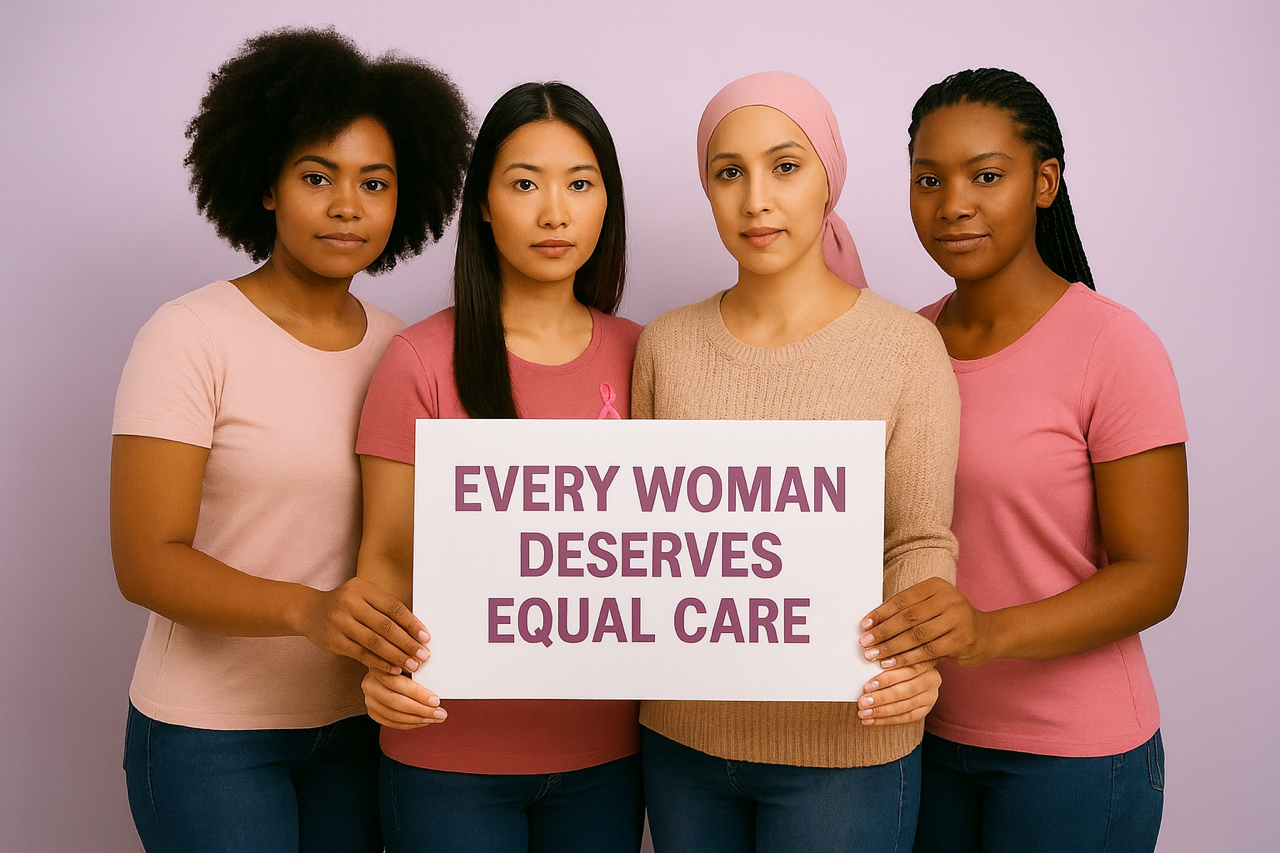
Disparities Among Underserved Populations:
Disparities Among Underserved Populations:
- Black Women:
- Higher mortality rate despite lower incidence than White women.
- More likely to be diagnosed at later stages:
- Only ~57% diagnosed at localized stage (vs. 66% of White women).
- 8–10% are diagnosed at metastatic stage (vs. ~5% for White women).
- Triple-negative breast cancer (more aggressive and harder to treat) is about 2x more common in Black women.

- Latina/Hispanic Women:
- Lower overall incidence but often diagnosed at younger ages.
- More likely than White women to be diagnosed at regional or distant stages:
- ~30–35% diagnosed at regional stage.
- ~7% at distant stage.
- Barriers: Language, lack of insurance, cultural stigma.
- American Indian/Alaska Native (AI/AN) Women:
- Often have lower screening rates, contributing to later-stage diagnosis.
- Distant-stage diagnoses can be 8–10%, higher than national average.
- Geographic isolation and limited access to oncology care are major factors.
-
- Asian American and Pacific Islander (AAPI) Women:
- Wide variation within subgroups (e.g., Vietnamese vs. Japanese).
- Slightly lower incidence overall, but certain subgroups have higher late-stage diagnosis due to access or cultural barriers.
Factors Driving Disparities:
- Limited access to healthcare
- Lower screening rates
- Insurance gaps
- Cultural and language barriers
- Medical mistrust or lack of provider follow-up

